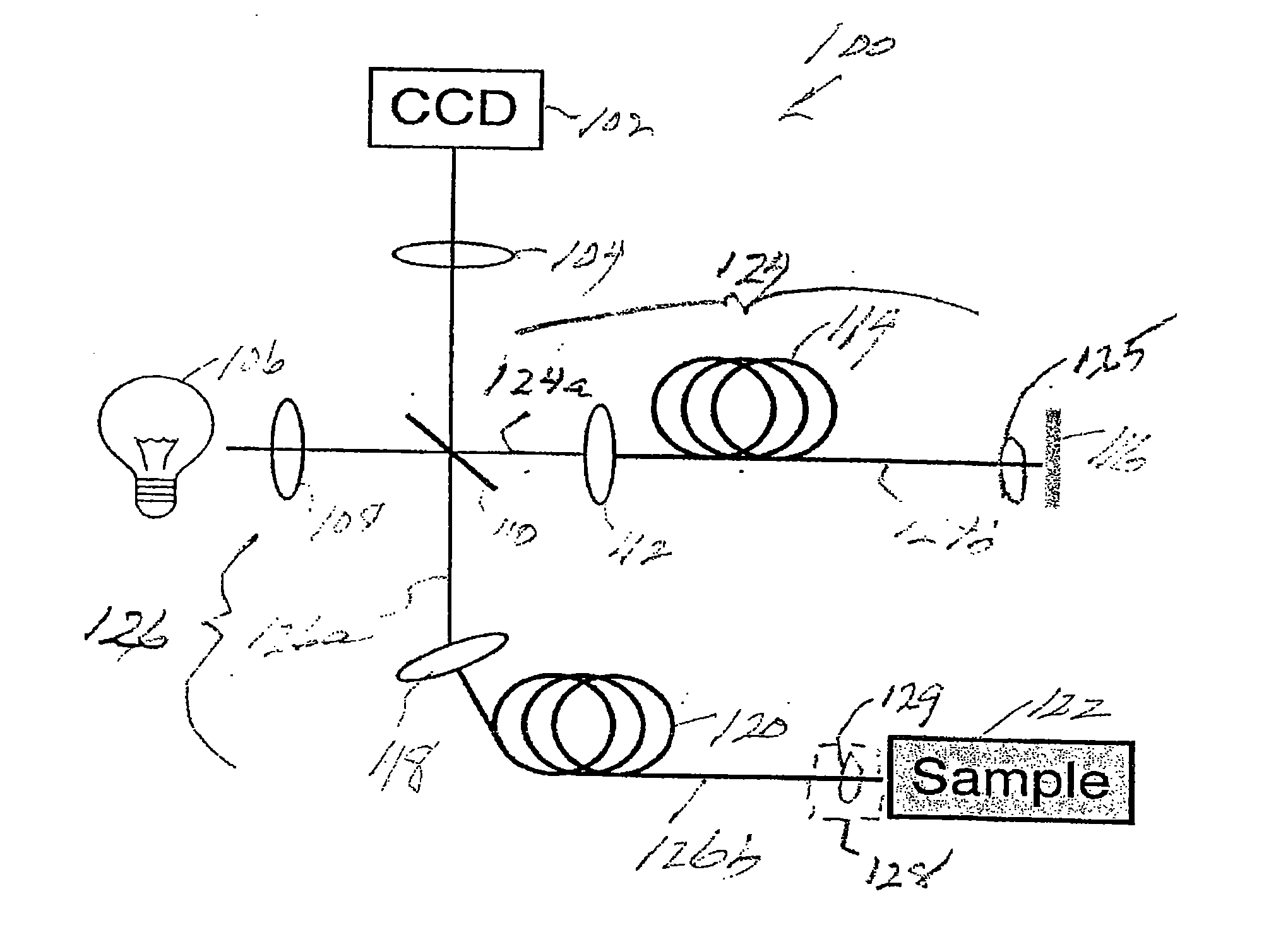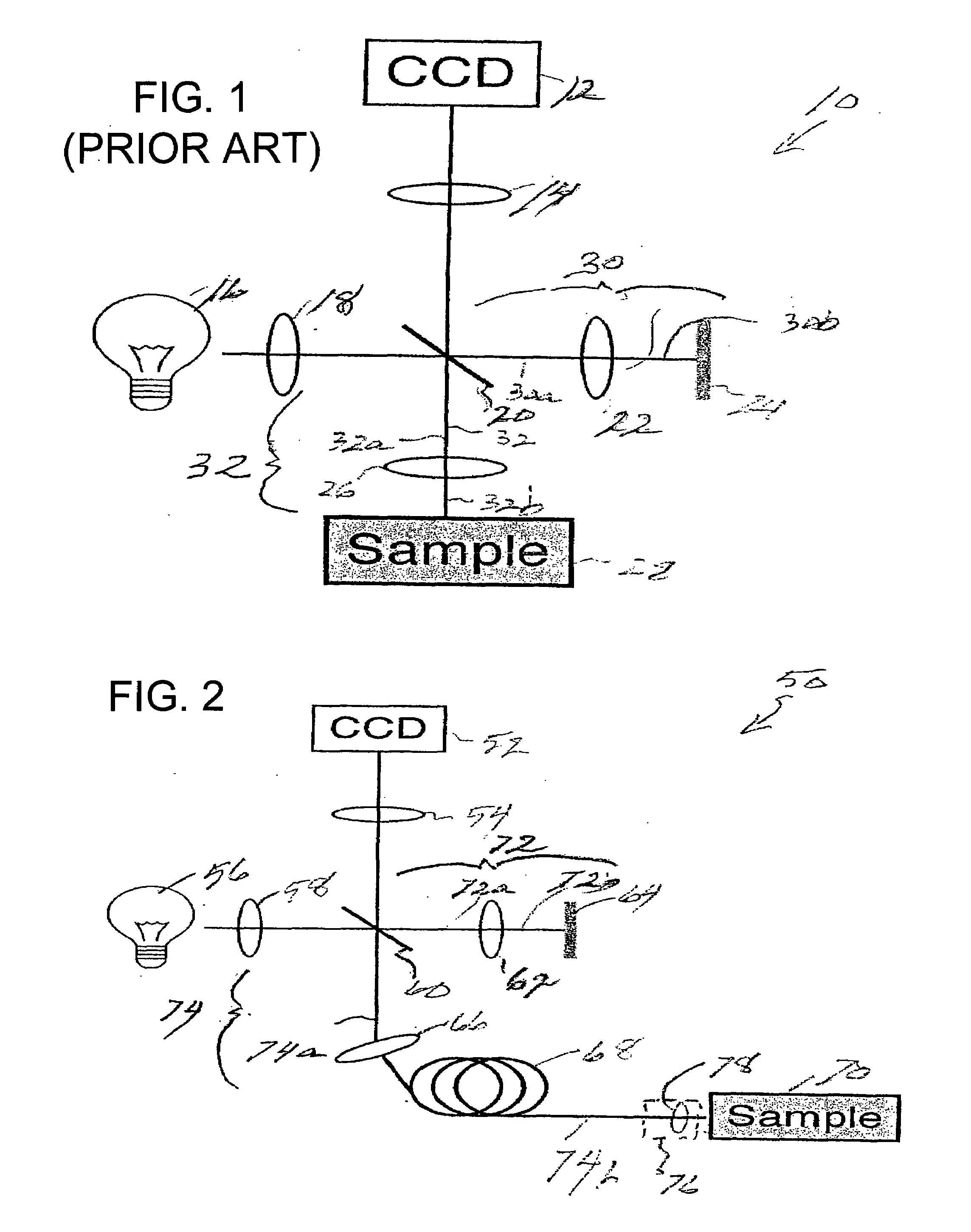Systems and methods for generating data using one or more endoscopic microscopy techniques
a technology of endoscopic microscopy and system, applied in the field of system and method for generating data using one or more endoscopic microscopy techniques, can solve the problems of difficult implementation of endoscopic cm systems, difficult to achieve endoscopic subcellular imaging, and difficulty in achieving endoscopic subcellular implementation, so as to reduce spatial coherence mismatch in spatial modes, prevent a desired level of interference, and improve the effect of temporal and spatial coherence match
- Summary
- Abstract
- Description
- Claims
- Application Information
AI Technical Summary
Benefits of technology
Problems solved by technology
Method used
Image
Examples
Embodiment Construction
[0070]Prior to providing a detailed description of the various exemplary embodiments of the methods and systems for endoscopic microscopy according to the present invention, some introductory concepts and terminology are provided below. As used herein, the term “endoscopic probe” can be used to describe one or more portions of an exemplary embodiment of an endoscopic system, which can be inserted into a human or animal body in order to obtain an image of tissue within the body.
[0071]As used herein, the term “monolithic” can be used to describe a structure formed as a single piece, which may have more than one optical function. As used herein, the term “hybrid” can be used to describe a structure formed as a plurality of pieces, each piece having one optical function.
[0072]The exemplary embodiments of the methods and systems according to the present invention described below can be used with any wavelength of light or electro-magnetic radiation, including but not limited to visible l...
PUM
 Login to View More
Login to View More Abstract
Description
Claims
Application Information
 Login to View More
Login to View More - R&D
- Intellectual Property
- Life Sciences
- Materials
- Tech Scout
- Unparalleled Data Quality
- Higher Quality Content
- 60% Fewer Hallucinations
Browse by: Latest US Patents, China's latest patents, Technical Efficacy Thesaurus, Application Domain, Technology Topic, Popular Technical Reports.
© 2025 PatSnap. All rights reserved.Legal|Privacy policy|Modern Slavery Act Transparency Statement|Sitemap|About US| Contact US: help@patsnap.com



